 Part of the Oxford Instruments Group
Part of the Oxford Instruments Group
Expand
Collapse
28 May 2020 | Stephanie Baclet
As part of the millennial generation, I was amongst those picturing that year 2000 would be filled with flying cars and multi-arm robotic helpers releasing me from work duty. I used to imagine myself immersed in a completely futuristic world looking a lot like the one in the movie the 5th element!
Today, all I need to do is to put on a set of Augmented Reality glasses.
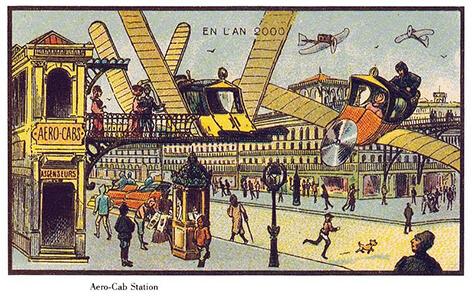
"Now put on your Augmented Reality glasses!".
Jean Marc Cote – Aero Cab Station in the year 2000.
The hunger for Augmented Reality and Virtual Reality started many years ago. Pieces like Race in the Pacific, made back in the 1900s, picture very nicely our human need to project ourselves into alternative worlds. And whilst artists were already working at designing new virtual worlds, scientists like Morton Heilig were also working at creating ever so real experience of virtuality.
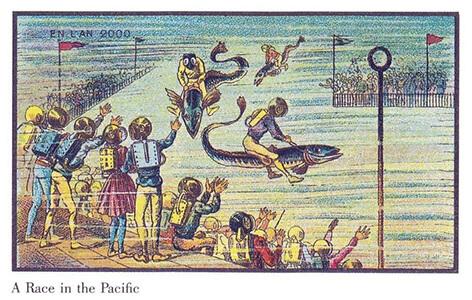
Jean Marc Cote – A Race in the Pacific.
Since then, the “Experience Theatre” – later called the Sensorama by Morton Heilig – has been transformed by nanotechnologies. What used to be the size of a vending machine has been reduced to a small and some would argue lightweight, headset.
From Diffractive Optical Elements to head tracking ability to 3D sensing and microdisplays, these headsets combine most of the high-end nanotechnology devices currently available.
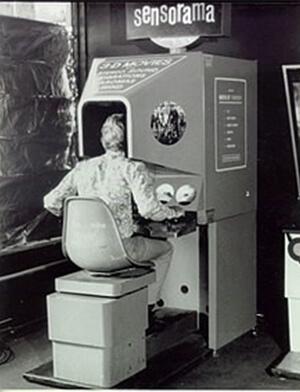
Sensorama, 1962 by Morton Heilig, is considered as one of the earliest virtual reality (VR) systems.
Simplified Eye wear usually referred as smart glasses have gained momentum in the last few years. Examples of smart glasses include Google glasses, Everysight Raptor, or more recent North’ Focals glasses. These eye wears differ from AR/ MR headset since they provide a digital contextual display. Smart glasses typically have small Field of View (FOV) around 15° with a display offset from the line of sight.
AR (or MR) are however defined as an extension of a computing platform. They are a more complex system and require higher data processing capability.
We discussed the basic component of some of the most popular headset in our "Beam me up Scotty" blog and although these headsets are readily available, there are still multiple challenges which need to be overcome.
One limitation that AR headset and smart glasses both have is the brightness of the virtual object. For the display to naturally merged with the outside world, the image displayed to the eye need to appear just as bright and clear as the real world.
However, the virtual image goes through a complex optical path before reaching the eyes of the user, which ultimately results in a loss of the image quality.
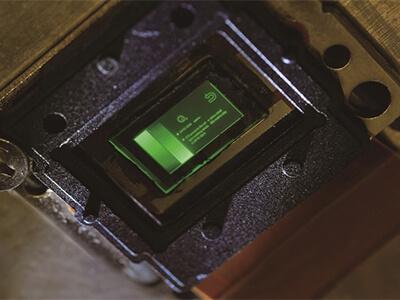
MicroLED enables Augmented Reality
To achieve high-quality of the virtual image, optical designers need to optimise the performance of both the optical system and the display. Considering the display, micro LED are a promising solution capable of higher brightness (>10k Nits) compared to OLED technology.
However, this technology is still undergoing development to reduce cost of the display. Alternative solutions to standard thin flip chip are being developed and Oxford Instruments Plasma Technology supplies key industry leaders in the field of micro led such as ITRI and Vue Real.
To enhance the brightness, optical designers also look at optimizing the optical path of the image. Waveguide optical combiners are the unique technology capable of producing high FOV at small form factor. High FOV is a key in creating immersive AR experience so multiple waveguide designs have been developed.
The focus is now on improving manufacturability whilst maximizing performance and Oxford Instruments Plasma Technology directly supports this effort with solutions addressing designs developed by major AR headset manufacturers such as Microsoft Hololens.
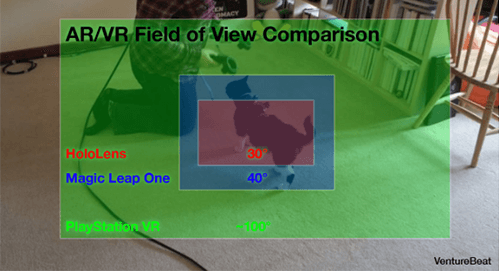
AR/VR Field of View Comparison: HoloLens vs Magic Leap One vs PlayStation VR
However, despite the technical challenges yet to be solved, smart glasses are building the momentum for AR headset and they are set to become commodity through applications in manufacturing, tourism, entertainment, education and even art, like this Mirage and Miracle AR art exhibition [below].
For more information on AR, check out Augmented Reality device solutions or read our white paper on large area surface etching for AR.

Stephanie Baclet
Senior Technical Marketing Engineer
2020
2019